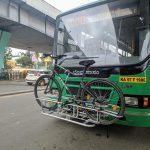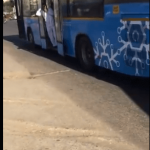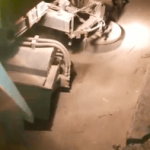Prof Ashish Verma of IISc spells out why pods will be a misfit in city
By MANASI PARESH KUMAR
With Chief Minister HD Kumaraswamy’s maiden budget reviving the pod taxi for five stretches in Bengaluru at a cost of Rs 1445 crores, several eyebrows are raised on what makes the government favour it as a possible solution to the city’s traffic nightmare. Interestingly, the idea of pod taxis isn’t as new as one would imagine. Indian cities have seen similar experiments before: The Chembur – Wadala – Maharaja Chowk monorail project, the airport feeder metro built by the Delhi Metro as a PPP project which was subsequently converted into the orange line. Both have had their share of criticism. However, the closest to the concept of pod taxis was perhaps the Goa Sky Bus, where one person actually lost his life! So will this system work for a city like Bengaluru?
Professor Ashish Verma, an Associate Professor of Transportation Engineering at the Indian Institute of Science, is a vocal critic of the proposed pod taxi system. Excerpts from an interview with him.
Not a mass transport system
A pod taxi is like a ropeway system and categorised as an automated guidance system which are of two types – Group Rapid Transit and Personal Rapid Transit (PRT). Pod Taxis are the PRT variety (which is being proposed in Bangalore). It has limited and low carrying capacity and therefore cannot be a main mode of transport. It does not provide last mile connectivity. However, it requires the rigid infrastructure of main mode or system that works on ROW A and has an equivalent cost. The main idea of urban mobility is to have main modes complemented by access modes. And pod taxis don’t fit into either of them. So I am not sure where it is that the pod taxis fit into the overall scenario of urban transport in Bengaluru.
Pod taxis and the world
Pod Taxis work as a PRT system in MorganTown in West Virginia which connects three campuses of West Virginia University and also in Masdar, Abu Dhabi. There again it connects the Masdar Institute of Science and Technology. So Pod Taxis have largely been part of controlled spaces, not part of an urban transport system. It is not a system that has picked up anywhere in the world. The Group Rapid Transport version is popular at airports like Frankfurt and London. It is used as a public transport system in one city in Germany. Schwebebahn (the name of the GRT) works in Wuppertal, a tiny city in West Germany with a population of less than 30000, that is a linear city built alongside River Wupper in a valley. That river is so narrow, you could be forgiven if you mistake it to be a Rajakaluve in Bangalore. The system is now primarily a tourist attraction.
Advantage, BRTS
Right now, public transport is at about 40%. With the current population of Bengaluru, this mode share is at least 20% less than what it ought to be — about 60 to 70%. Non Motorised Transport or NMT is less than ten percent. That includes both walking and cycling. As far as private transport is concerned, a chunk of it is from two wheelers. Cars take on 5% of the trips. The problem is the amount of space they occupy. A bus requires just 0.5 metre square to transport one person, whereas in a car, the difference is ten times (5 metre square).
We also have a wrong understanding of the BRTS system with rigid routes. What it should be is a flexible model of movement for public transport. Unfortunately, the Bogota model is what functions in India. The capital city of Columbia has the largest BRTS system in the world with 40,000 people per hour per direction. That is the largest in the world and most extensive. But they haven’t been able to replicate the model anywhere else in the country. The city still has opted for a metro system to move people. Let’s look at speed in the context of pod taxis. The speed that they have quoted — 60 km per hour — is the running time and does not factor in acceleration and deceleration.
But when you talk about speed you have to look at it as door-to-door speed. Because that is what matters. What is the door-to-door travel time? It is not as if the pod taxi drops you in front of your house. The real picture lies in the time taken for end-to-end travel. The same logic holds good for the elevated corridors as well. You maybe running faster in certain sections but what is the time you take to travel from door to door.
In the context of pod taxis, we have to consider the cost of the rigid infrastructure which is not meant for sub arterial roads without a plan for integration – how will that work in favour of time? We are unable to integrate our metro and railway station. For example, look at the time for transfer between the metro and stations like Cantonment and Yeshwanthpur.
On the other hand, buses have better flexibility and have a wide range of cabinets and come in different sizes. You can run smaller buses. Even accessibility to a bus stop will be better than the access to a pod taxi. Now about short term solutions. Quick improvement or short term solutions are meant for six months or one year. They are low-cost and should not be planned at Rs 50 crore per kilometre. Where is the justification for spending this kind of money on something that will reach saturation in a short period?
© Oorvani Foundation/Open Media Initiative. Also available online at Citizen Matters.



